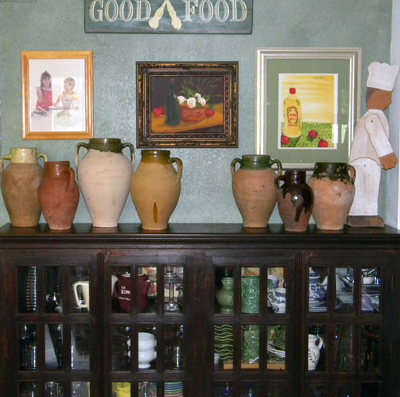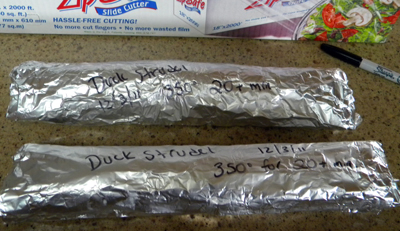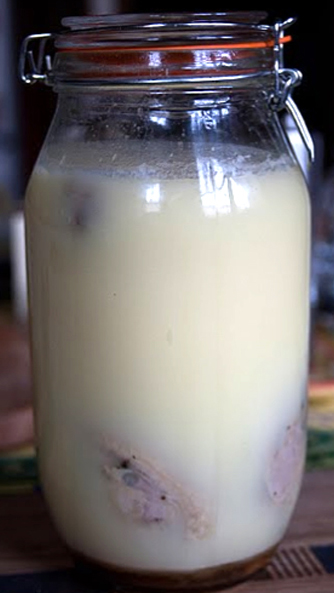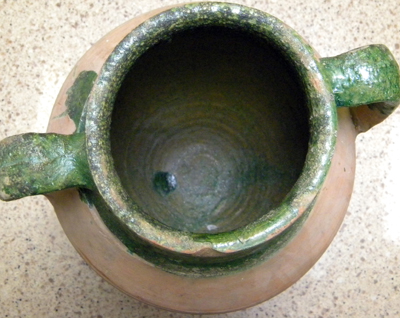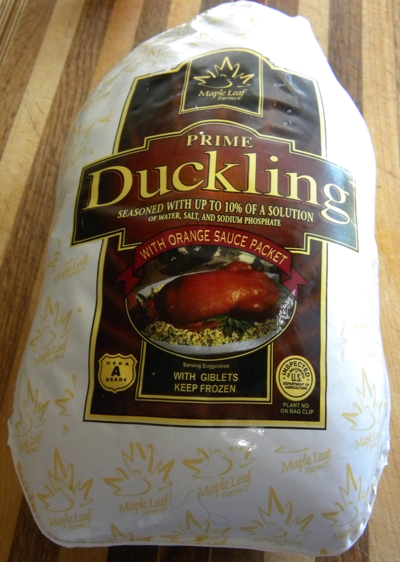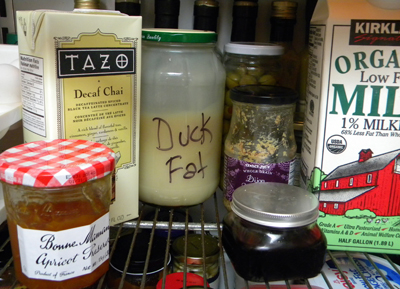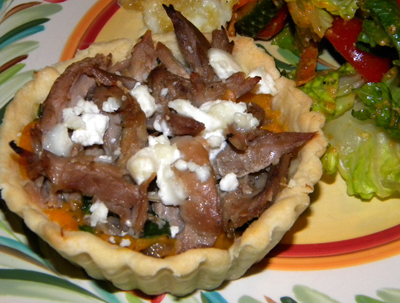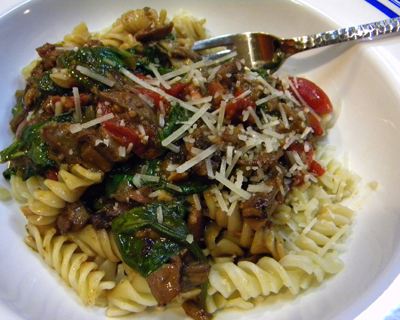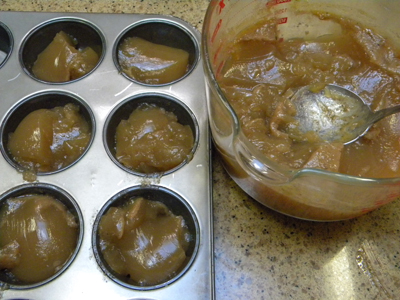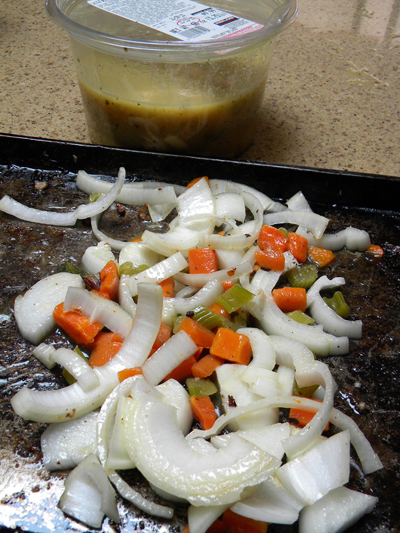festive duck
First things first – Happy Birthday to my BBF, Jennifer Markett, who lives in Illinois! I LOVE YOU! And if you were here with me, I would be serving you this wonderful duck strudel! xoxo
Pictured above is my collection of authentic vintage French confit pots. Pretty, aren’t they? Duck confit has been a preservation method, for cooking and keeping duck in its rendered fat in France, for centuries. It results in supremely tender, moist, and extremely flavorful duck. You can then sear the duck legs in a hot skillet and serve them as is, shred the meat and add it to salads, or into the delicious and festive strudel recipe, I have for you below.
One of the great things about this strudel is that you can assemble the entire thing a month in advance and freeze it. Pop it in the oven for your Christmas celebrations and impress your guests! It is out of this world glorious!
A sealed glass jar of confit may be kept in the refrigerator for up to six months, or several weeks if kept in a reusable plastic container. To maximize preservation, the fat should top the meat by at least one inch. As the fat turns solid and prevents any air from reaching the meat, so basically the confit technique is a way of hermetically sealing the meat. The cooking fat acts as both a seal and preservative and results in a very rich taste.
I have been collecting authentic confit pots from France for a while now. Before refrigerators, the pots were used to “refrigerate” the confit. The entire inside of the pot is glazed and the glaze drips decoratively down the outside rim of the pot. The rest of the outside of the pot is left unglazed. The pot was filled with the duck and sealed with the fat. The pot was then buried in the cold mud and the unglazed outside of the pot would soak up that coldness and keep the duck confit perfectly chilled until ready to dig out and use.
The amount of duck confit used in this recipe is small, only 4 ounces. So instead of going to the trouble to make my own confit, I purchased a leg quarter from Chef Vincent Guerithault of the famed Vincent’s on Camelback. Call ahead, and Chef Guerithault will happily sell you some too. Or you can make your own duck confit, I’ve included a recipe from Epicurious.com at the bottom of this post. It is not difficult, just time-consuming. You will need to salt the duck for at least 24 hours before beginning and you have to render duck fat from the duck skin, which I have posted about before. The link on how to do that is there in the recipe too. But if you just purchase the confit, you can get going on the strudel recipe…. right now!
December 3, 2011 1 Comment
ducking the summer
For the first time in months, the high temperature has been under 100 degrees. The high 90’s may not seem like much a of reprieve to most people, but for those of us in the Valley of Sun, it’s a huge difference. It is most likely more of a break mentally, but it makes us happy and gives us hope that fall is finally on its way!
So, duck is not traditionally thought of as a warm weather dish, but it was surprising refreshing, even on a 96 degree day. It was inspired by a recipe I’d seen by Tyler Florence, one of my favorite celebrity chefs.
I saved the water used for steaming the duck, poured it into a large glass measuring cup and chilled it. Then I removed the top layer of fat and used the water underneath to boil jasmine rice as an accompaniment for the duck. Finally, I seasoned the rice with salt and a few dashes of Chinese five-spice.
Although this recipe takes about 2 hours to cook, the actual hands-on time is less than 10 to 15 minutes.
September 14, 2011 No Comments
lucky duck
One of the countless benefits of working at a world-class cooking school is the goodies I get to bring home. Not only delicious leftovers but in most cases, what I even appreciate more are the by-products of the food made there. The chicken, beef, and veal bones; extra produce that was purchased but not used; even homemade puff pastry that a chef made as a demo and then left behind. Earlier this week was the last class of the season and I hit the mother load; lobster shells and duck skin. Today we will use the duck skin and in the following days I will show you how to make priceless lobster stock and lobster oil, and then use those to make lobster risotto, YUM!
May 12, 2011 No Comments
one or the other
Today I can’t decide which recipe to post. The one that uses the rest of the duck that I received back on Tuesday of last week. Don’t worry, I’m not just now using the duck – nearly a week later! I’m just getting around to posting it. Or the recipe that uses up the leftover homemade marshmallows from the S’Mores Party… OK, decision made – I’ll put up the yummy duck recipe today and use the marshmallows tomorrow…
November 15, 2010 No Comments
ragu
A few ducky facts for you today: Duck is low in Saturated Fat. It is also a good source of Iron, and an excellent source of high-quality Protein, Niacin, and Selenium. Some people wonder if the duck is in fact “white” meat since is so much darker than chicken or turkey meat.
The reason is that ducks are more active in comparison to chickens or turkeys, therefore they need and use up more oxygen. The extra oxygen in the body of the duck and in other types of game birds gives their meat a darker red color. Duck is “white” meat.
Now that you know more about ducks than you may have wanted to know – it’s time to use the little quackers in a tasty dish!
[Read more →]
November 12, 2010 No Comments
lucky duck
I had the good fortune of being given more than a dozen cooked duck legs and thighs to use however I choose! (Thank you, Barbara!) What to do with this unexpected treasure? I decided to shred off all the meat and reserved it for a recipe I shall post tomorrow and then use all the bones to make luscious, gelatinous (as seen above), and luxurious duck stock. Having a load of duck stock in your freezer is akin to having a trust fund at your disposal. A good duck stock can be the base for wonderful soups, stews, ragouts, cassoulets, and sauces. If you do not have enough duck pieces, use a mixture of 75% duck bones and 25% chicken bones. The stock can be stored in the freezer for up to 1 year.
Some of the best soups are made with a combination of homemade duck and chicken stocks. I’ll use the duck stock to deglaze the pan for richer chicken and beef dishes, and it is fabulous as a component of out-of-this-world chicken pot pie. Unless you’re making duck soup, duck stock is generally used in smaller amounts due to its distinctive flavor and richness, so freeze it in small quantities, as seen here in muffin tins, so that it can easily throw it into dishes without having to defrost more than needed. The six cups of stock I made yielded 20 muffin cup-size portions.
A note on my complete and utter laziness … you’ll notice that I used carrot and celery pieces from some Costco Chicken Soup purchased for Marissa and myself, instead of driving to the store to purchase those two necessities. What can I say, I don’t feel all that swell with my swollen head and I generally pick out the carrots from my chicken soup anyhow, so what the heck!
[Read more →]
November 11, 2010 No Comments

